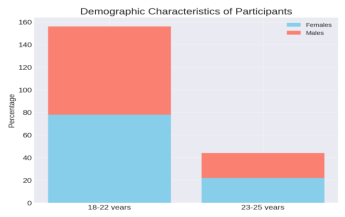Prevalence and Impact of Non-Strabismic Binocular Vision Disorders among College Students in Surat District, Gujarat: A Cross-Sectional Study
Keywords:
Non-Strabismic Binocular Vision Disorders, Convergence Insufficiency, Accommodative Insufficiency, Screen Time, College Students, Visual HealthAbstract
Objective: This study aimed to investigate the prevalence of Non-Strabismic Binocular Vision Disorders (NSBVD), including Convergence Insufficiency (CI) and Accommodative Insufficiency (AI), among college students in Surat, Gujarat, and to explore correlations with screen time and academic demands. Methods: A cross-sectional study was conducted with 300 college students aged 18–25 years. Participants underwent binocular vision assessments, including Near Point of Convergence (NPC), Near Point of Accommodation (NPA), and fusional vergence testing. Data were analyzed using chi-square tests and descriptive statistics to determine the prevalence of NSBVD and its associations with screen time. Results: The overall prevalence of NSBVD was 30% (95% CI: 25.1% - 34.9%). Convergence Insufficiency was the most common disorder, affecting 18% (95% CI: 13.8% - 22.2%) of students, followed by Accommodative Insufficiency (8%, 95% CI: 5.0% - 11.0%) and Accommodative Excess (4%, 95% CI: 2.0% - 6.0%). High screen time (>6 hours/day) was strongly associated with increased NSBVD prevalence, with 40% of participants in this group exhibiting symptoms of NSBVD, particularly CI (22%). No significant age or gender differences in NSBVD prevalence were observed. Conclusion: The study identifies a high prevalence of NSBVD among college students, especially those with prolonged screen time. These findings highlight the need for routine visual health screenings, ergonomic interventions, and targeted vision therapy to alleviate visual strain and support academic performance. Prolonged screen exposure and academic pressures should be considered critical factors in the management of NSBVD in young adults.
References
P. Shrestha and R. Kaiti, “Non-strabismic Binocular Vision Dysfunction among the Medical Students of a Teaching Hospital: A Descriptive Cross-sectional Study,” JNMA J Nepal Med Assoc., Vol.60, No.252, pp.693–696, 2022. doi: 10.31729/jnma.7615.
S. Sarkar and S. Bordoloi, “Frequencies of non-strabismic binocular dysfunctions in a population of school-going and university-going students,” Unpublished, 2021.
K. Kaur, B. Gurnani, S. Nayak, N. Deori, S. Kaur, J. Jethani, et al., “Digital Eye Strain- A Comprehensive Review,” Ophthalmol Ther., Vol.11, No.5, pp.1655–1680, 2022. doi: 10.1007/s40123-022-00540-9.
T. Shongmu and Z. Akhtar, “Prevalence of non-strabismic binocular vision anomalies (NSBVA) among university students of North India,” Indian J Clin Exp Ophthalmol., Vol.10, pp.281–287, 2024. doi: 10.18231/j.ijceo.2024.050.
M. W. Rouse, E. Borsting, L. Hyman, M. Hussein, S. A. Cotter, M. Flynn, et al., “Frequency of convergence insufficiency among fifth and sixth graders. The Convergence Insufficiency and Reading Study (CIRS) group,” Optom Vis Sci., Vol.76, No.9, pp.643–649, 1999. doi: 10.1097/00006324-199909000-00022.
M. Rosenfield, “Computer vision syndrome (a.k.a. digital eye strain),” Optom Pract., Vol.17, pp.1–10, 2016.
M. Iqbal, A. Soliman, O. Ibrahim, and A. Gad, “Analysis of the Outcomes of the Screen-Time Reduction in Computer Vision Syndrome: A Cohort Comparative Study,” Clin Ophthalmol., Vol.17, pp.123–134, 2023. doi: 10.2147/OPTH.S399044.
M. Scheiman, G. L. Mitchell, S. Cotter, J. Cooper, M. Kulp, M. Rouse, et al., “A randomized clinical trial of treatments for convergence insufficiency in children,” Arch Ophthalmol., Vol.123, No.1, pp.14–24, 2005. doi: 10.1001/archopht.123.1.14.
A. L. Sheppard and J. S. Wolffsohn, “Digital eye strain: prevalence, measurement and amelioration,” BMJ Open Ophthalmol., Vol.3, No.1, 2018. doi: 10.1136/bmjophth-2018-000146.

Downloads
Published
How to Cite
Issue
Section
License

This work is licensed under a Creative Commons Attribution 4.0 International License.
Authors contributing to this journal agree to publish their articles under the Creative Commons Attribution 4.0 International License, allowing third parties to share their work (copy, distribute, transmit) and to adapt it, under the condition that the authors are given credit and that in the event of reuse or distribution, the terms of this license are made clear.





